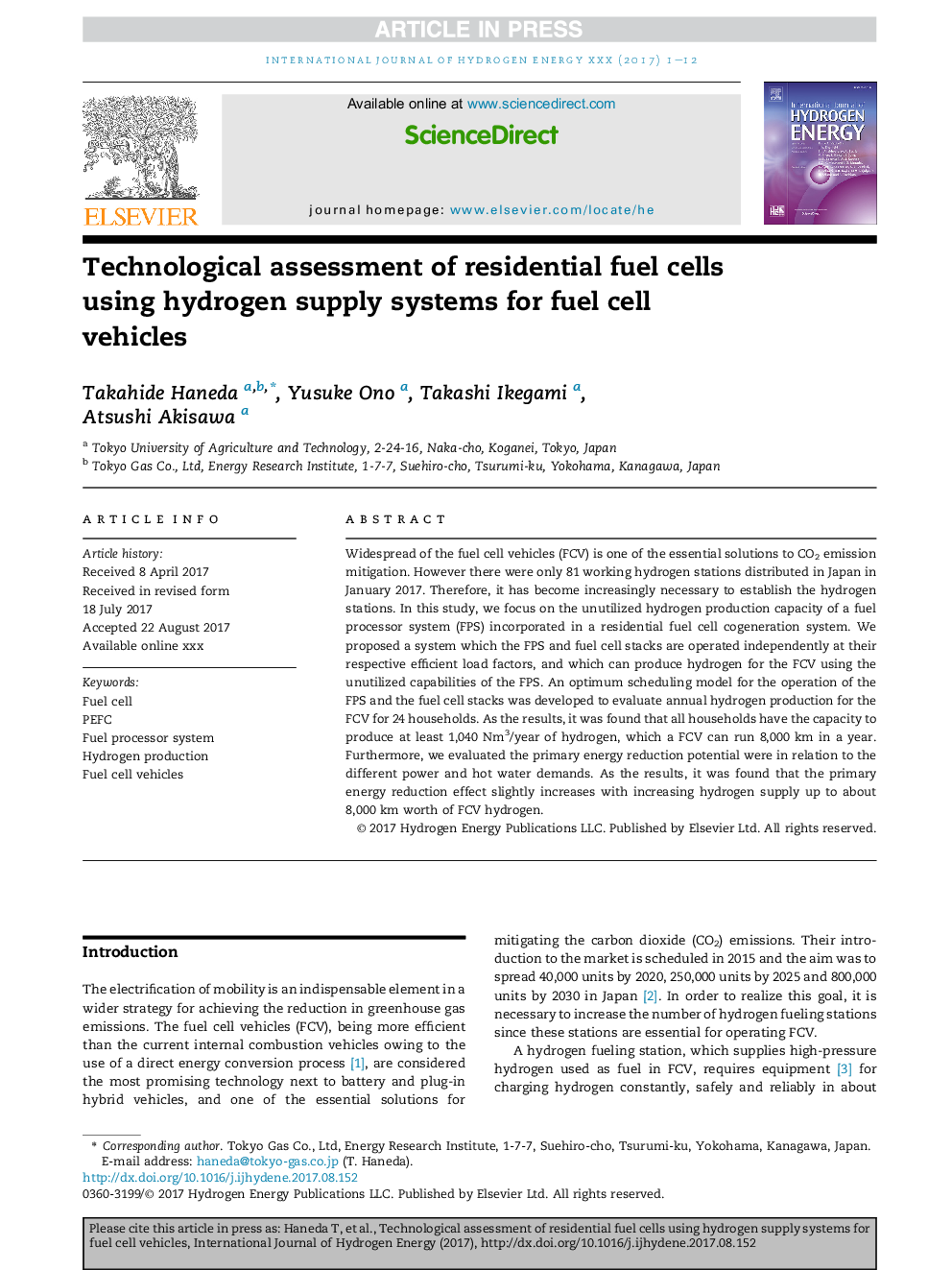| Article ID | Journal | Published Year | Pages | File Type |
|---|---|---|---|---|
| 5145071 | International Journal of Hydrogen Energy | 2017 | 12 Pages |
Abstract
Widespread of the fuel cell vehicles (FCV) is one of the essential solutions to CO2 emission mitigation. However there were only 81 working hydrogen stations distributed in Japan in January 2017. Therefore, it has become increasingly necessary to establish the hydrogen stations. In this study, we focus on the unutilized hydrogen production capacity of a fuel processor system (FPS) incorporated in a residential fuel cell cogeneration system. We proposed a system which the FPS and fuel cell stacks are operated independently at their respective efficient load factors, and which can produce hydrogen for the FCV using the unutilized capabilities of the FPS. An optimum scheduling model for the operation of the FPS and the fuel cell stacks was developed to evaluate annual hydrogen production for the FCV for 24 households. As the results, it was found that all households have the capacity to produce at least 1,040Â Nm3/year of hydrogen, which a FCV can run 8,000Â km in a year. Furthermore, we evaluated the primary energy reduction potential were in relation to the different power and hot water demands. As the results, it was found that the primary energy reduction effect slightly increases with increasing hydrogen supply up to about 8,000Â km worth of FCV hydrogen.
Related Topics
Physical Sciences and Engineering
Chemistry
Electrochemistry
Authors
Takahide Haneda, Yusuke Ono, Takashi Ikegami, Atsushi Akisawa,
